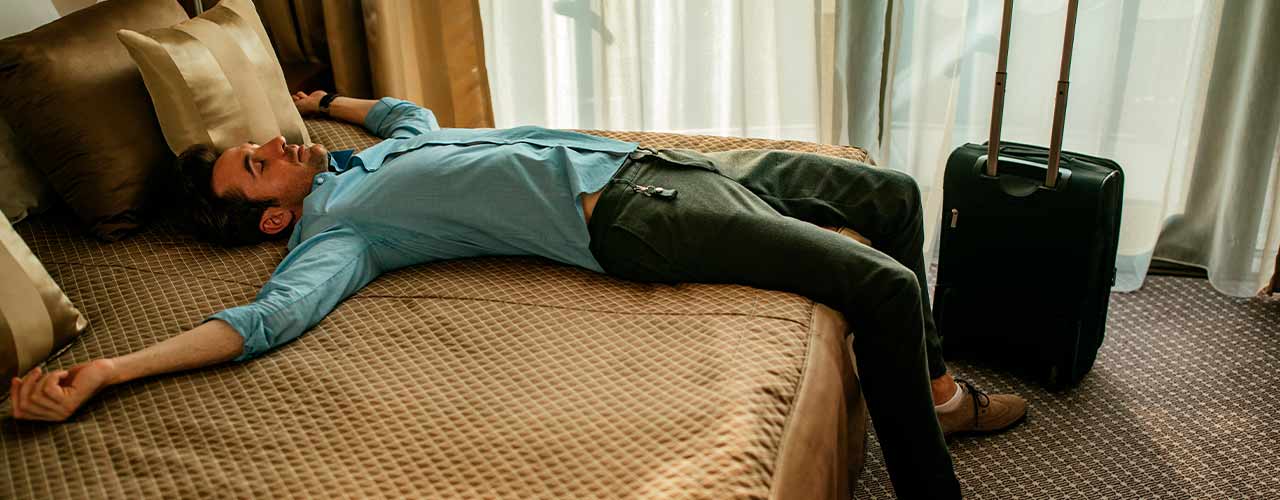Have you ever taken an international trip and were affected by rapid time zone changes? Did it take you long to adapt to the new routine? If you answered “yes”, know that you probably experienced the typical Jet Lag discomfort, a temporary sleep disorder. This fellow traveler is to be expected and can be stronger for some than for others. The larger the difference between the time zone where you live and the one in your destination, the greater the likelihood of this discomfort.
Os sintomas mais comuns do Jet Lag incluem dificuldade em iniciar e manter o sono, cansaço, perda de apetite, irritação, dor de cabeça, má digestão e atenção reduzida, dentre outros problemas fisiológicos que surgem em consequência de alterações no ritmo circadiano (que, traduzindo, significa um ciclo que dura um dia). Os sintomas variam de pessoa para pessoa, algumas podem sentir mais sono que o normal, enquanto outras podem sentir mais cansaço mental, por exemplo.
Dicas que ajudam a minimizar o desconforto do Jet Lag
- Uma boa noite de sono antes do voo é fundamental;
- Tente iniciar um ajuste ao fuso horário local antes mesmo da viagem, verifique se precisará adiantar ou atrasar seu relógio e, se possível, comece a dormir e acordar mais cedo ou mais tarde já nos dias que antecedem a viagem.
- Programa-se para chegar ao destino de dia, assim você consegue se familiarizar com o novo fuso horário com mais facilidade;
- Beba bastante água, siga uma dieta leve, ajustada ao fuso horário, e pratique exercícios físicos mesmo durante a viagem;
- Não consuma medicamentos para dormir, pois podem acentuar os efeitos do jet lag;
- Evite bebidas alcóolicas, pois o álcool altera o sono, além de desidratar;
- Tente deixar sua cama e seu quarto o mais confortáveis possível para que você tenha um boa noite de sono e esteja novo para explorar o mundo no dia seguinte, máscara de dormir é um ótimo aliado, já que ela bloqueia a entrada de luz nos olhos.
Now, if you feel these discomforts even though you are not travelling, you might have a sleep disorder.
See a sleep physician, who can diagnose it and prescribe the best treatment for you. The most common sleep disorder is sleep apnea. Studies show that around 30% of the global population has apnea, but the vast majority is not aware of it.
It is straightforward and necessary to diagnose obstructive sleep apnea. The Biologix Sleep Test is a (type IV) polysomnography that can be performed at home using only a cell phone and a compact, cordless sensor. Therefore, it is conducted without upsetting patients’ sleep routine. Before going to sleep for the night, just place the sensor on your finger and start the test on the Biologix App. Upon waking up, click on “end test” to get the result immediately.
So, follow our tips to do away with jet lag, relax and enjoy your trip!
DISCLAIMER: The information contained in this blog aims at assisting you in your education and is not intended to be construed in any manner as medical advice. Only physicians and dentists can diagnose diseases and prescribe treatments and medication. Thank you for visiting our website..



